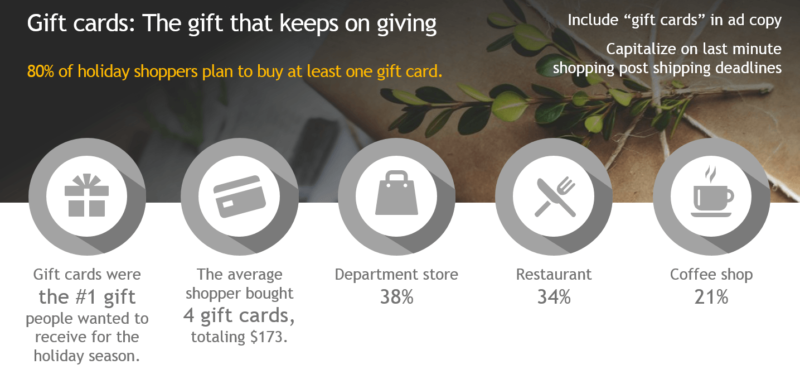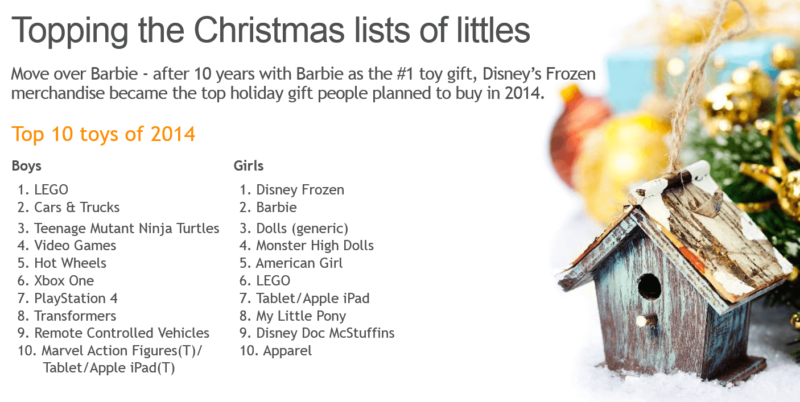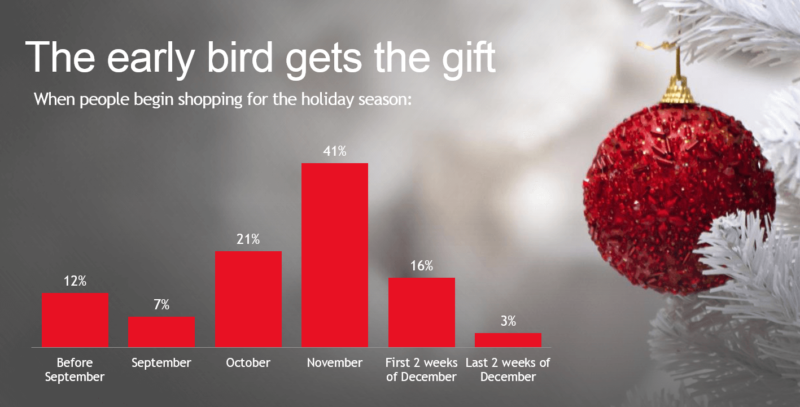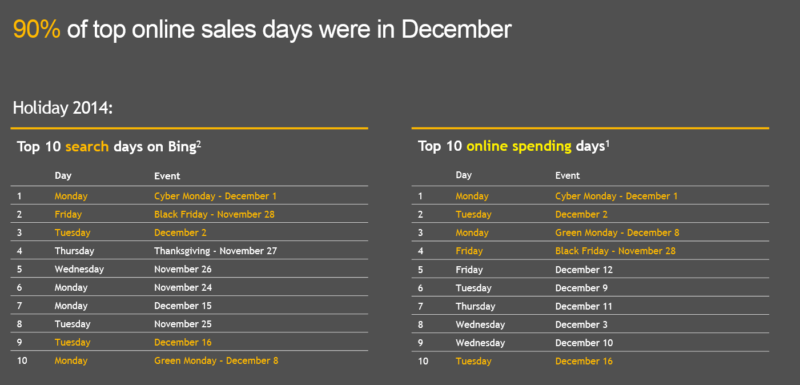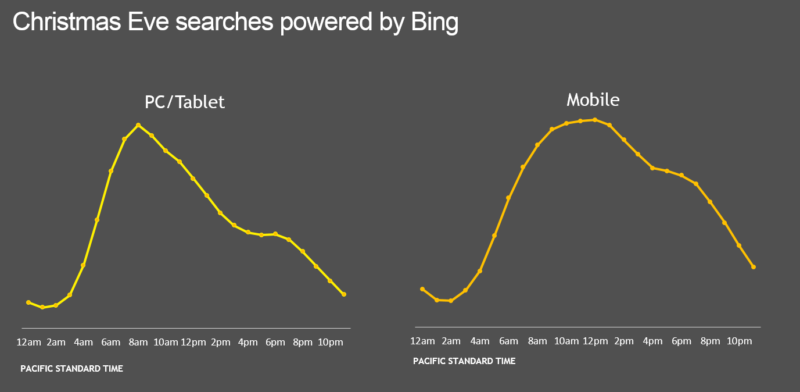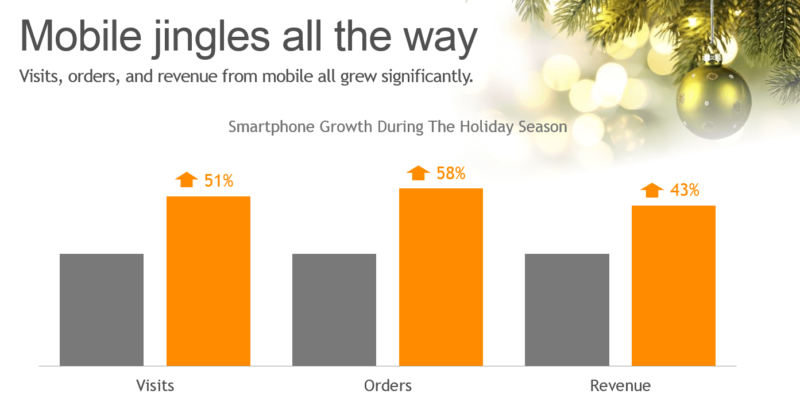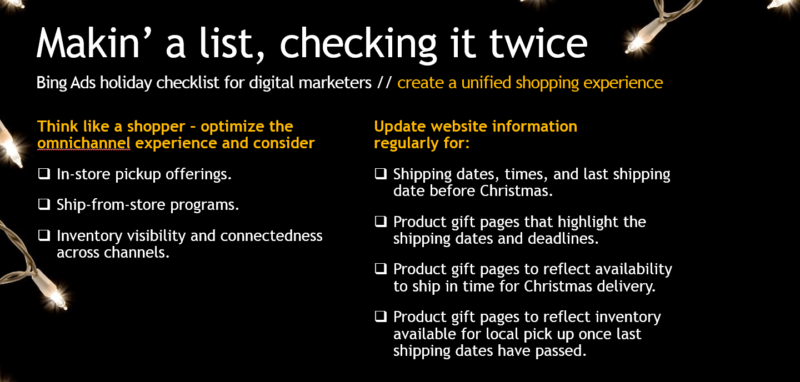Achieve Holiday Zen Through The Art Of Paid Search Planning
Columnist John Cosley of Bing discusses the holiday trends that impact planning and budgeting for search marketers.
Marketers, take a deep breath. The hustle and bustle that accompanies the holidays is already upon us. But there’s no need to panic.
You can achieve a state of Zen through masterful planning, understanding consumer behavior, identifying key shopping dates and knowing how to maximize digital spend.
It’s The Most Wonderful — And Biggest Retail — Time Of The Year
Last year in the US, Cyber Monday exceeded $2B in sales for the first time — the greatest online sales day in US history.
The National Retail Federation reports that in 2014, $616 billion was spent during the holiday season, up 4 percent from the year before. The average shopper last year had a projected spend of $804 on holiday items, including $597 on gifts. And according to eMarketer, retail e-commerce sales during the holiday season this year are expected to grow 13.9 percent and account for $79.4 billion.
Accounting for more than $32 billion in sales, gift cards topped the list of the gifts people plan to give during the holidays. The average shopper bought 3–4 gift cards and spent $173 in 2014. Tremendous consumer demand and the nearly 100 percent instant margin make gift cards a significant opportunity for most advertisers.
Of course, the holidays aren’t complete without seeing that twinkle in the eyes of a child. Here are last year’s most sought after kids’ items (National Retail Federation, November 2014):
Consider the top in-demand gifts as you develop your keyword list and ad copy, as well as where customers may be shopping for these items — online, offline — so you can target the appropriate device and message appropriately.
And the key to capturing those dollars? This holiday season, a few things lead to holiday Zen — here is a look:
Master The Art Of Timing
There’s a reason the stores stock their shelves with holiday items in October: consumers shop early for the holidays.
In fact, 40 percent of shoppers begin before November, while two-thirds plan to buy their last holiday gift the week of Christmas (National Retail Federation Monthly Consumer Survey, Oct 2014). That’s a long shopping season!
With a four-month shopping window in front of us, narrowing down the top shopping days is especially helpful as you plan your budgets.
It’s easier now than ever to understand the key dates for holiday searches — and spend. Here at Bing Ads, we can tell you exactly when searches, click-through rate, and CPC peak (or dip) hour by hour on some of the top shopping days — by device, by category, you name it:
- Black Friday: Black Friday sales peak early in the morning. In 2014, online sales grew 9.5 percent from the previous year and peaked around 9:00 a.m. PT — pretty close to what searches on Bing are doing. Ensure your budget won’t allow you to go dark right when sales peak at 8:55 a.m. by implementing Automated Rules.
- Thanksgiving: Searches peak on Bing first at 8:00 a.m., and then again at 6:00 p.m. Once again, take the necessary precautions to ensure your budget doesn’t let you go dark for this key shopping day.
- Cyber Monday: Cyber Monday searches also peak twice during the day — first at 10:00 a.m., then again at 6:00 p.m. It’s important to monitor your budget twice on this day with two humps.
While consumers love to shop early, don’t forget that there are still a lot of last-minute shoppers out there. Christmas Eve falls on a Thursday this year, so people may leave work early to visit brick-and-mortar stores, which are often open on Christmas Eve.
Savvy marketers should use extensions here to help capture last-minute shoppers frantically in search of a gift — or gift card.
And what about Green Monday? Yes, this is a new term, coined by eBay, for the top online spending day in December. It is usually the second Monday of the month, and it follows the same pattern as Christmas Eve.
Green Monday is a huge spending day, so it pays to know when searches peak by device, so that you’re ready to capture demand. And don’t forget to use the Bing Ads app to monitor campaign performance on the go.
Check out this SlideShare presentation for all of the specifics, so you can double down on key hours or periods of the day by device — and implement extensions to drive traffic accordingly.
Merry, Merry Mobile
It’s pretty clear that 2014 was another major turning point for mobile shopping. For the first time, mobile traffic exceeded PC/desktop traffic on Thanksgiving, with 52 percent of all online traffic. This is where device modifiers can become your best friend to boost mobile traffic.
Nearly half all of online traffic came from mobile last holiday season — and mobile revenue is growing by an astonishing 111 percent (Branding Brand. 2014 Mobile Holiday Trends Mobile Commerce Index, Feb. 2015). Specifically, we mean visits from smartphones increased, orders increased and revenue increased — healthy growth across the spectrum.
On top of that, 83 percent of smartphone users engage in shopping activities before, during or after visiting a store. How are people using their phones? It’s important to think about your mobile strategy at each leg of the shopping trip (Experian Information Solutions, Inc. 2015):
- Before even stepping foot inside the store (62 percent): First and foremost, ensure you’re advertising on mobile — and showing up. Shoppers may be looking for a gift or store location; enable location extensions and call out extensions to make it easy for them to find you.
- While shopping (53 percent): People are “showrooming,” or checking your items out at the store and perhaps price comparison shopping on their smartphone to see if they can purchase it somewhere else for less. Be sure to promote your discounts and deals within your ad copy.
- At the checkout (25 percent): This is the last chance to buy it somewhere else — or buy more. Perhaps accessories?
- After they leave (19 percent): Yes, people are still “showrooming” when they leave. Perhaps they could return their purchase and buy it somewhere else. Or maybe they are reading reviews to reassure themselves of the purchase.
What are the key takeaways to reach mobile holiday shoppers on the go?
Be consistent across devices. Whether users are on desktop, smartphone or tablet, they should be able to easily find your identical offers.
Additionally, use extensions. Smartphone users are engaging with mobile extensions, and they perform. Here are just a few to consider:
- Help them call you. Use call extensions. 70 percent of mobile users have called a business from the search results. This is great news on two fronts: first, it means that people are engaging with this ad format; and second, advertisers are seeing a 25 percent lift in click-through rates when they use call extensions (Microsoft internal data). Show your business phone number in your ad.
- Help them find you. Use location extensions. Seventy-six percent of smartphone searchers used a store locator to help them find (and maybe even visit) a local store. Again, great news, as the click-through rate lift for location extensions is 15 percent (Microsoft internal data). Show the address of your business location closest to the customer, including a local phone number. And if the customer is viewing your ad on a smartphone, they can click that number to give you a call.
Help them see the right location. Location Targeting will help you show your ads to people in, searching for or viewing pages about your targeted location.
The right offer to the right audience. Don’t overlook remarketing. Whether a user just visited your site or abandoned a cart, with remarketing you can build and target online audiences to help you reach the right customer with the right offer. If you have not done it already, that means getting Universal Event Tracking tags set up.
Perhaps most important, make it easy. Mobile visitors spend half as much time on a website as those coming from a PC. When asked, consumers cited an “easy checkout” as the top factor that would help them spend more holiday shopping dollars on mobile.
Make sure you optimize your mobile site for an easy customer shopping experience. Mobile-optimized sites can increase smartphone conversion rates by up to 160 percent. (Check out our tips for mobile site design.)
Unify The Shopping Experience
What do we mean when we say “unified” shopping experience? Shoppers expect a connected experience, whether they’re using their phone or computer and whether they’re shopping online or at the store. Consumers expect to be able to fulfill their order with flexible options, from overnight shipping to in-store pickup for an even faster “delivery.” And they expect consistent deals and offerings across this unified experience.
In this hyper-connected world, shoppers now can easily switch between devices and online/offline channels. This means consumers “showroom” by visiting a brick-and-mortar store to check things out in person before purchasing online — likely for a better price.
On the other hand, they also “webroom” by researching online prior to purchasing in-store.
Make sure to highlight offers and deals in your ad copy and keywords — shoppers are often looking for a deal, and they will look both online and offline for the best value. It’s particularly important to make sure your best offering is available across your channels, so it’s easy for your customers to find — especially when it’s so easy to go to a competitor for a deal.
Highlighting holiday specials via extensions and making your store location easy to find via location and call extensions — particularly on mobile — may capture shoppers on the go in search of a deal.
Think Like A Shopper: Flexibility Matters
The weekend before Christmas showed significant growth in 2014, thanks to flexibility in fulfillment.
Highlight your shipping options (free shipping, in-store pickup, ship-from-store programs and more) in your ad copy and on your website. That will ensure consumers are aware of the different options for purchase, delivery and pickup. And don’t miss out on a sale because shoppers don’t know you offer in-store pickup or that your product is available at another store location.
And Finally: Diversify
Reaching as much of your target customer as possible will help you maximize your profits this holiday season. For that reason, it’s important to diversify your spend to ensure you are not missing out. For example, through Bing Ads, you can reach 51 million retail shoppers not reached on Google — that’s larger than the state of California!
Our Gift To You: Holiday Zen
Whoever you’re selling to, with the right planning, preparation and insights, 2015 could bring you the best holiday season ever. Cheers to that!
Contributing authors are invited to create content for Search Engine Land and are chosen for their expertise and contribution to the search community. Our contributors work under the oversight of the editorial staff and contributions are checked for quality and relevance to our readers. The opinions they express are their own.
Related stories

